Bhutan, often called the “Land of the Thunder Dragon,” is a small kingdom in the Eastern Himalayas known for its pristine landscapes, rich cultural heritage, and unique approach to governance and development. This blog delves into the various aspects of Bhutan, including its geography, history, culture, economy, festivals, environmental conservation efforts, and more.
Table of Contents
Geography
Bhutan is a landlocked country in South Asia, nestled between China to the north and India to the south, east, and west. With an area of approximately 38,394 square kilometers, Bhutan’s terrain is predominantly mountainous, with elevations ranging from 200 meters to over 7,000 meters above sea level. The country’s landscape is characterized by steep mountains, deep valleys, dense forests, and glacial rivers. Bhutan’s highest peak, Gangkhar Puensum, stands at 7,570 meters and remains the world’s highest unclimbed mountain. The diverse topography and varying altitudes contribute to Bhutan’s rich biodiversity and stunning natural beauty.
States Of Bhutan
Bhutan, a kingdom known for its stunning natural beauty and rich cultural heritage, is divided into 20 administrative districts, known locally as dzongkhags. Each dzongkhag has its own unique charm, culture, and traditions. Below is an overview of each dzongkhag along with its capital.
| No. | Dzongkhag | Capital |
|---|---|---|
| 1 | Bumthang | Jakar |
| 2 | Chukha | Phuentsholing |
| 3 | Dagana | Dagana |
| 4 | Gasa | Gasa |
| 5 | Haa | Haa |
| 6 | Lhuntse | Lhuntse |
| 7 | Mongar | Mongar |
| 8 | Paro | Paro |
| 9 | Pemagatshel | Pemagatshel |
| 10 | Punakha | Punakha |
| 11 | Samdrup Jongkhar | Samdrup Jongkhar |
| 12 | Samtse | Samtse |
| 13 | Sarpang | Sarpang |
| 14 | Thimphu | Thimphu |
| 15 | Trashigang | Trashigang |
| 16 | Trashiyangtse | Trashiyangtse |
| 17 | Trongsa | Trongsa |
| 18 | Tsirang | Damphu |
| 19 | Wangdue Phodrang | Wangdue Phodrang |
| 20 | Zhemgang | Zhemgang |
Historical Overview
Bhutan’s history is steeped in legend and spirituality. The country’s historical narrative begins around the 7th century AD when Buddhism was introduced to the region. According to legend, Guru Rinpoche, also known as Padmasambhava, brought Buddhism to Bhutan in the 8th century. He is believed to have subdued evil spirits and established sacred sites throughout the country, laying the foundation for Bhutan’s Buddhist heritage.
In the 17th century, Zhabdrung Ngawang Namgyal, a Tibetan lama, unified Bhutan as a nation-state and established the dual system of governance, which combined spiritual and temporal authority. This system included the construction of impressive dzongs (fortresses) that served as both religious and administrative centers. The establishment of the monarchy in the early 20th century marked the beginning of Bhutan’s modern era. In 2008, Bhutan transitioned to a democratic constitutional monarchy, with the king retaining significant influence in the country’s affairs.
Culture and Society
Bhutanese culture is deeply rooted in Buddhism, which influences every aspect of life, from daily rituals to national policies. The predominant form of Buddhism practiced in Bhutan is Vajrayana Buddhism, known for its intricate rituals, symbols, and deities. Monasteries, stupas, prayer wheels, and prayer flags are common sights throughout the country, reflecting the spiritual devotion of the Bhutanese people.
One of the most distinctive aspects of Bhutanese culture is the concept of Gross National Happiness (GNH). Introduced by the fourth king, Jigme Singye Wangchuck, in the 1970s, GNH prioritizes the well-being and happiness of the population over economic growth. This holistic approach to development encompasses four pillars: sustainable development, cultural preservation, environmental conservation, and good governance. GNH has garnered international attention and admiration, setting Bhutan apart as a pioneer in promoting happiness and well-being as a national goal.
Top Ten Most Beautiful Villages of Bhutan
| No. | Village | Dzongkhag |
|---|---|---|
| 1 | Rukubji | Wangdue Phodrang |
| 2 | Gangtey | Wangdue Phodrang |
| 3 | Ura | Bumthang |
| 4 | Merak | Trashigang |
| 5 | Sakteng | Trashigang |
| 6 | Tang | Bumthang |
| 7 | Laya | Gasa |
| 8 | Paro | Paro |
| 9 | Punakha | Punakha |
| 10 | Haa | Haa |
Festivals and Celebrations
Bhutanese festivals, known as tshechus, are vibrant and colorful events that celebrate the teachings of Guru Rinpoche and other Buddhist saints. These festivals are held annually in various dzongs and monasteries across the country. Tshechus feature masked dances, traditional music, and rituals that provide a deep insight into Bhutanese spirituality and culture. The Paro and Thimphu tshechus are among the most popular, attracting both locals and tourists.
Another significant celebration is the Punakha Drubchen, which reenacts a historic battle against Tibetan invaders. The performance, involving hundreds of local men dressed in traditional warrior costumes, commemorates Bhutan’s victory and the valor of its people. Festivals in Bhutan are not only religious events but also social gatherings that strengthen community bonds and preserve cultural traditions.
Top Ten Must-Visit Destinations in Bhutan
Bhutan, the Land of the Thunder Dragon, is a mesmerizing country with stunning landscapes, rich cultural heritage, and vibrant traditions. Here are ten must-visit destinations that showcase the beauty and uniqueness of this Himalayan kingdom.
1. Paro Valley
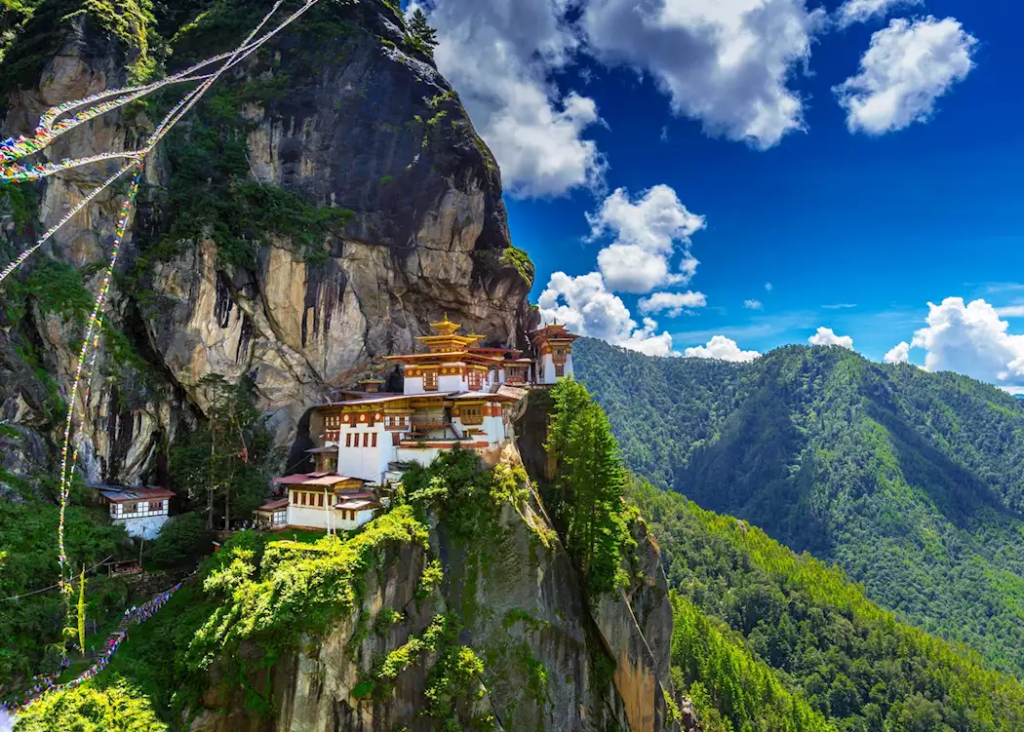
Paro Valley is one of Bhutan’s most picturesque regions, surrounded by lush green hills and dotted with traditional Bhutanese homes. It is home to several important historical and religious sites, including the famous Paro Taktsang, or Tiger’s Nest Monastery. Perched on the edge of a cliff 900 meters above the valley floor, this sacred site is a must-visit for its breathtaking views and spiritual significance.
2. Thimphu

The capital city of Thimphu offers a blend of modernity and tradition. Visitors can explore the impressive Tashichho Dzong, which houses the throne room and offices of the king. The National Memorial Chorten, built in memory of the third king, is a popular spot for locals to pray and meditate. Don’t miss the weekend market, where you can find local produce, handicrafts, and textiles.
3. Punakha

Punakha, the former capital of Bhutan, is known for its stunning Punakha Dzong, one of the most beautiful dzongs in the country. Located at the confluence of the Pho Chhu and Mo Chhu rivers, the dzong is an architectural masterpiece. The Punakha Suspension Bridge, one of the longest in Bhutan, offers panoramic views of the river and surrounding mountains.
4. Bumthang Valley

The Bumthang Valley is often referred to as the spiritual heartland of Bhutan. It consists of four main valleys: Chokhor, Tang, Ura, and Chhume. The region is home to some of Bhutan’s oldest temples and monasteries, such as Jambay Lhakhang and Kurje Lhakhang. The valley’s serene beauty and spiritual ambiance make it a perfect destination for those seeking tranquility.
5. Haa Valley
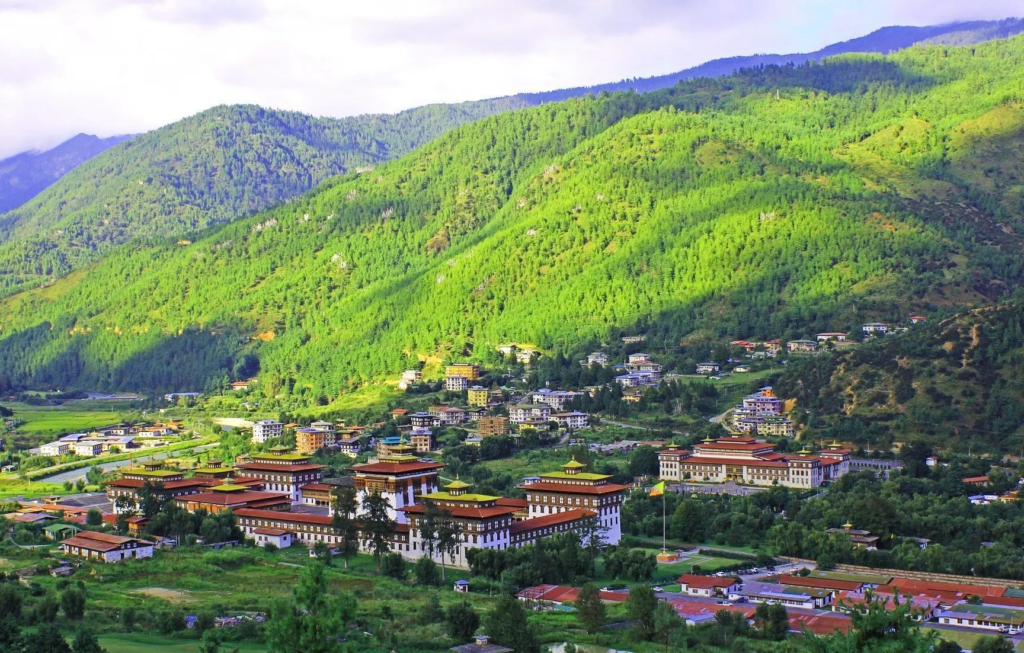
The remote and pristine Haa Valley is one of Bhutan’s hidden gems. Known for its unspoiled natural beauty, the valley offers a glimpse into traditional Bhutanese life. Visitors can explore ancient temples like Lhakhang Karpo (White Temple) and Lhakhang Nagpo (Black Temple) and enjoy trekking and camping in the picturesque surroundings.
6. Phobjikha Valley

The glacial Phobjikha Valley is a stunning U-shaped valley and a significant wildlife sanctuary. It is the winter home to the endangered black-necked cranes, which migrate from Tibet. The Gangtey Monastery, perched on a hill overlooking the valley, is an important religious site and offers spectacular views of the valley below.
7. Dochula Pass

Located on the road from Thimphu to Punakha, Dochula Pass offers panoramic views of the Himalayan mountain range. The pass is marked by 108 chortens (stupas), known as the Druk Wangyal Chortens, built in honor of Bhutanese soldiers who lost their lives in battle. The pass is a popular stop for visitors to enjoy the breathtaking scenery and take photographs.
8. Trongsa
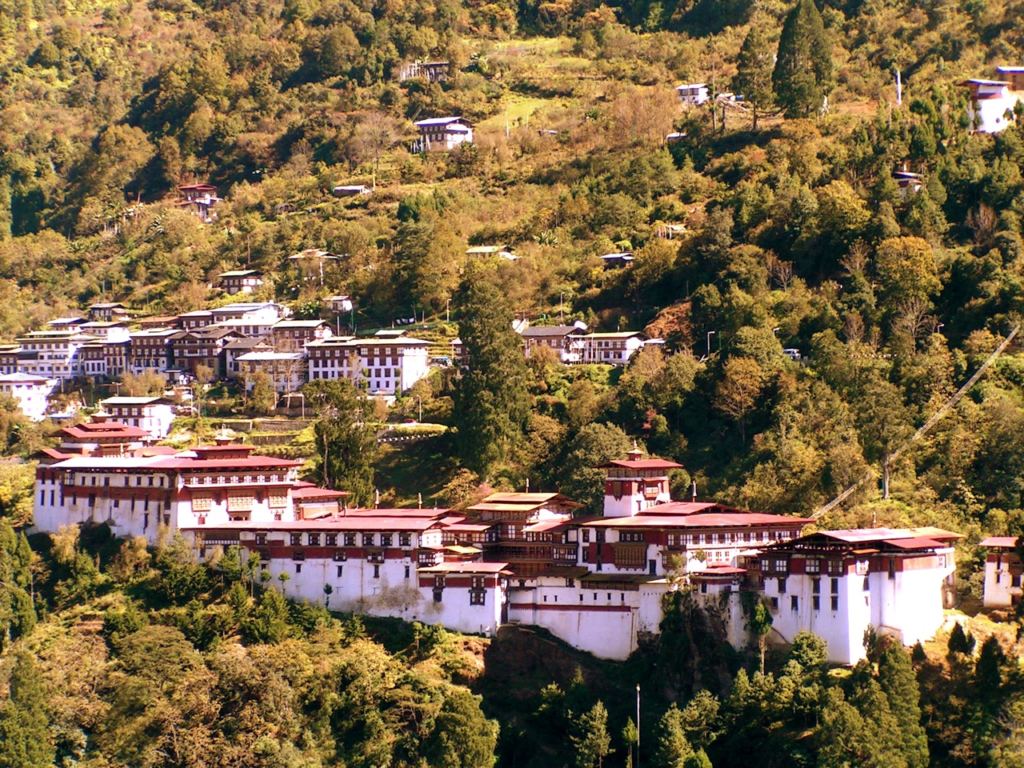
Trongsa is home to the impressive Trongsa Dzong, the largest dzong in Bhutan. The dzong is strategically located on a cliff, offering commanding views of the surrounding valleys. The Ta Dzong, a watchtower turned museum, provides insights into Bhutan’s history and the royal family’s heritage.
9. Lhuentse

The remote and beautiful Lhuentse district is known for its stunning landscapes and traditional textile weaving. The Lhuentse Dzong, perched on a hilltop, offers spectacular views of the Kuri Chhu river. The district is also famous for its Kishuthara weaving, a traditional textile art form unique to the region.
10. Jigme Dorji National Park

As Bhutan’s second-largest national park, Jigme Dorji National Park is a haven for wildlife enthusiasts and nature lovers. The park is home to diverse flora and fauna, including endangered species like the snow leopard, red panda, and Himalayan blue sheep. Visitors can enjoy trekking, bird-watching, and exploring the park’s pristine landscapes.
Economy
Bhutan’s economy is primarily agrarian, with the majority of the population engaged in subsistence farming. The main crops include rice, maize, and wheat, while livestock farming is also common. In recent years, the government has been promoting cash crops such as apples, oranges, and cardamom to increase farmers’ incomes and reduce poverty.
Hydropower is Bhutan’s most significant economic asset. The country’s fast-flowing rivers and steep gradients make it ideal for generating hydroelectric power. Bhutan exports most of its electricity to India, and hydropower revenues constitute a substantial portion of the national income. However, the development of hydropower projects must balance economic benefits with environmental preservation, in line with the principles of GNH.
Tourism is another important sector of the Bhutanese economy. The government adopts a high-value, low-impact tourism policy to minimize the negative impacts of mass tourism on the environment and culture. Visitors to Bhutan are required to book their trips through licensed tour operators and pay a daily tariff, which includes accommodation, meals, and a guide. This approach ensures that tourism remains sustainable and that visitors have a meaningful and immersive experience.
Environmental Conservation
Bhutan is renowned for its commitment to environmental conservation. The country has enshrined environmental protection in its constitution, mandating that at least 60% of the land remain forested. Currently, over 70% of Bhutan is covered in forests, making it one of the world’s most forested countries. Bhutan is also the only carbon-negative country in the world, meaning it absorbs more carbon dioxide than it emits.
Protected areas and national parks, such as the Jigme Dorji National Park and the Royal Manas National Park, play a crucial role in preserving Bhutan’s rich biodiversity. These areas are home to a wide variety of flora and fauna, including endangered species like the Bengal tiger, red panda, and snow leopard. Conservation efforts also extend to community-based initiatives, promoting sustainable livelihoods and environmental stewardship among local populations.
Education and Health
Bhutan places a high value on education and healthcare, with both sectors receiving significant government investment. The education system has undergone substantial reforms to improve accessibility and quality, with a focus on preserving Bhutanese culture and values. The curriculum includes both modern subjects and traditional ones, aiming to equip students with the skills needed for the country’s development while instilling a sense of cultural identity.
Healthcare in Bhutan is provided free of charge to all citizens. The government prioritizes primary healthcare and preventive measures, resulting in significant improvements in health indicators over the years. Traditional medicine is also integrated into the healthcare system, offering a holistic approach to health and well-being.
Governance and Politics
Bhutan’s governance system is a unique blend of monarchy and democracy. The king, known as the Druk Gyalpo, plays a vital role in the country’s political and cultural life. The transition to a democratic constitutional monarchy in 2008 marked a significant milestone in Bhutan’s political evolution. The constitution provides for a parliamentary system with an elected National Assembly and a National Council that functions as the upper house.
Elections in Bhutan are characterized by high voter turnout and active political participation. The country’s political landscape is dominated by a few major parties, with a strong emphasis on stability, national unity, and the principles of GNH. Good governance is one of the pillars of GNH, and the government strives to ensure transparency, accountability, and inclusivity in its policies and programs.
Challenges and Future Prospects
Despite its achievements, Bhutan faces several challenges. The country’s small and agrarian-based economy is vulnerable to external shocks, such as natural disasters and fluctuations in hydropower revenue. Climate change poses a significant threat, with the potential to disrupt agriculture, water resources, and livelihoods. Balancing modernization with cultural preservation and environmental sustainability remains an ongoing challenge.
Rapid urbanization and youth unemployment are other pressing issues. As more young people move to urban areas in search of better opportunities, the traditional way of life in rural communities is under threat. The government is working to address these challenges by promoting sustainable development, diversifying the economy, and creating job opportunities for the youth.
Despite these challenges, Bhutan’s commitment to GNH and its proactive approach to development provide a strong foundation for the future. The government’s emphasis on sustainable development, innovation, and resilience is key to navigating the complexities of the 21st century. Bhutan’s unique development model, which prioritizes happiness and well-being, continues to inspire and attract global attention.
Bhutanese Art and Craft
Bhutanese art and craft reflect the country’s rich cultural heritage and spiritual traditions. The traditional arts, known as Zorig Chusum, encompass thirteen crafts, including painting, wood carving, sculpture, weaving, embroidery, and metalwork. These crafts are passed down through generations, preserving ancient techniques and designs.
Thangka painting, a form of religious art depicting Buddhist deities and mandalas, is a prominent craft in Bhutan. These intricate paintings are used in religious ceremonies and are considered sacred. Weaving is another important art form, with each region in Bhutan producing distinct textiles. The vibrant colors and intricate patterns of Bhutanese textiles are highly prized and play a significant role in the country’s cultural identity.
Bhutanese Cuisine
Bhutanese cuisine is characterized by its use of local ingredients, simple preparation methods, and bold flavors. The staple food is red rice, which is often served with a variety of dishes, including vegetables, meat, and cheese. Chilies are a fundamental ingredient in Bhutanese cooking, and the national dish, ema datshi, is a spicy stew made with chilies and cheese.
Other popular dishes include phaksha paa (pork with red chilies), jasha maru (spicy chicken), and momo (dumplings filled with meat or vegetables). Dairy products, particularly cheese and butter, are widely used in Bhutanese cuisine. Butter tea, known as suja, is a traditional drink made with tea leaves, butter, and salt, and is commonly served during social and religious gatherings.
Top Eight Most Famous Food Of Bhutan

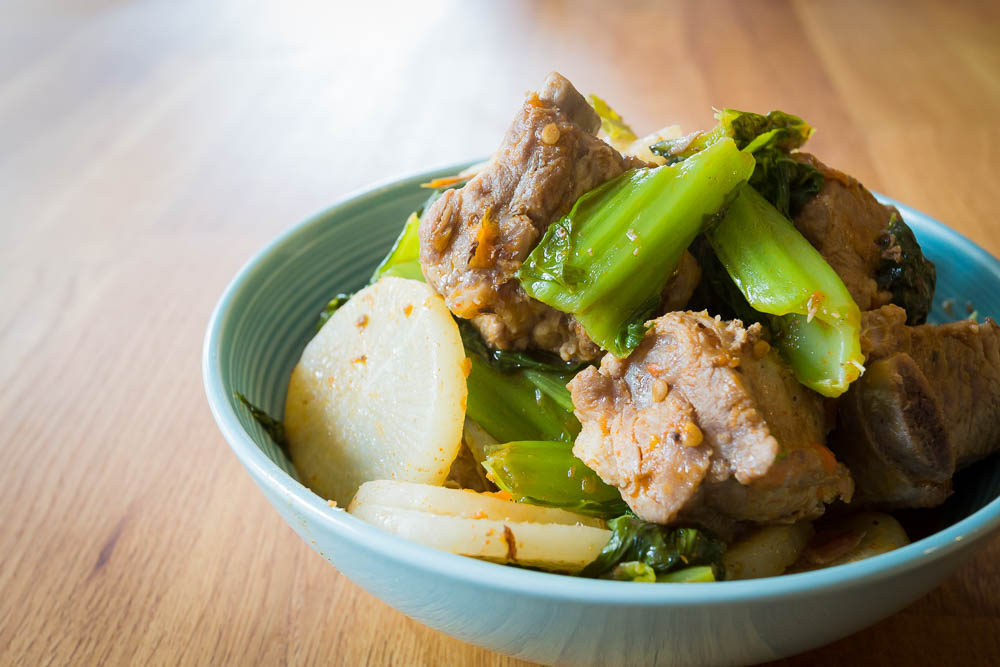


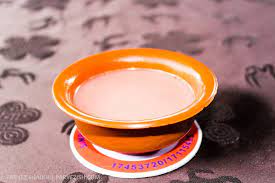
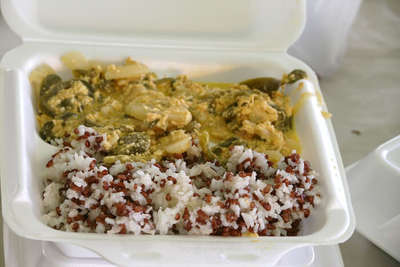
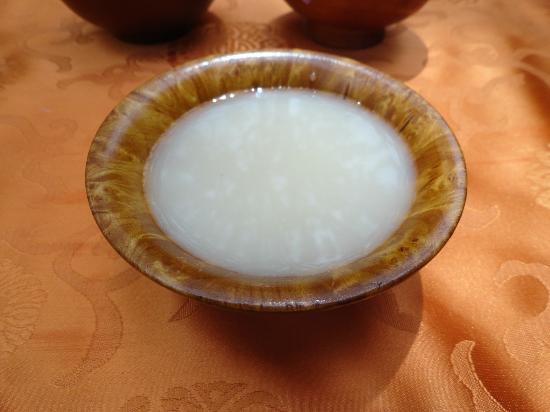

Traditional Attire
The traditional attire of Bhutanese people is both distinctive and symbolic. Men wear the gho, a knee-length robe tied at the waist with a belt called a kera. Women wear the kira, a long dress that reaches the ankles
and is fastened at the shoulders with brooches called koma. The kira is complemented by a short jacket called a tego and an inner blouse called a wonju.
Traditional attire is worn daily by Bhutanese people and is a requirement in schools, government offices, and during official events and ceremonies. The vibrant colors and intricate patterns of the gho and kira reflect Bhutan’s rich cultural heritage and sense of national pride.
Religion and Spirituality
Religion and spirituality are integral to Bhutanese life. Vajrayana Buddhism, the dominant religion, permeates every aspect of society. Monasteries, temples, and religious festivals are central to community life, providing spiritual guidance and social cohesion. Monks and nuns play a significant role in preserving and transmitting religious teachings and practices.
Bhutanese people practice various rituals and ceremonies to seek blessings, ward off evil spirits, and ensure harmony and prosperity. Pilgrimages to sacred sites, such as the Tiger’s Nest Monastery and the Bumthang Valley, are common spiritual practices. The construction of chortens (stupas) and the hoisting of prayer flags are other expressions of faith and devotion.
Media and Communication
Bhutan’s media landscape has evolved significantly over the past few decades. The country has a diverse range of media outlets, including newspapers, radio stations, and television channels. The government-owned Bhutan Broadcasting Service (BBS) is the main television and radio broadcaster, providing news, educational programs, and entertainment.
The advent of the internet and social media has transformed communication in Bhutan, particularly among the younger generation. Social media platforms are widely used for information sharing, social interaction, and business promotion. The government encourages the responsible use of media and emphasizes media literacy to ensure that citizens are informed and engaged.
Bhutan’s International Relations
Bhutan maintains a policy of cautious engagement with the international community, balancing its sovereignty with the benefits of global cooperation. India is Bhutan’s closest ally and largest trading partner, with strong economic, cultural, and political ties. The two countries collaborate on various projects, including hydropower development, infrastructure, and education.
Bhutan is also a member of regional organizations such as the South Asian Association for Regional Cooperation (SAARC) and the Bay of Bengal Initiative for Multi-Sectoral Technical and Economic Cooperation (BIMSTEC). Bhutan’s foreign policy focuses on promoting peace, stability, and sustainable development, aligning with its principles of GNH.
Conclusion
Bhutan, the Land of the Thunder Dragon, is a unique and enchanting kingdom that offers a harmonious blend of tradition and modernity. Its commitment to preserving cultural heritage, protecting the environment, and prioritizing the well-being of its people sets it apart as a model for sustainable development. As Bhutan navigates the challenges and opportunities of the 21st century, it continues to inspire and captivate the world with its vision of Gross National Happiness.
Through its rich cultural traditions, innovative development philosophy, and breathtaking natural beauty, Bhutan invites us to rethink our approach to development and consider the true essence of happiness and well-being. Whether through its vibrant festivals, intricate arts and crafts, or the serene spirituality that permeates daily life, Bhutan offers a profound and enriching experience for all who visit or learn about this remarkable country.
let’s enjoy few years on earth with peace and happiness….✍🏼🙏

